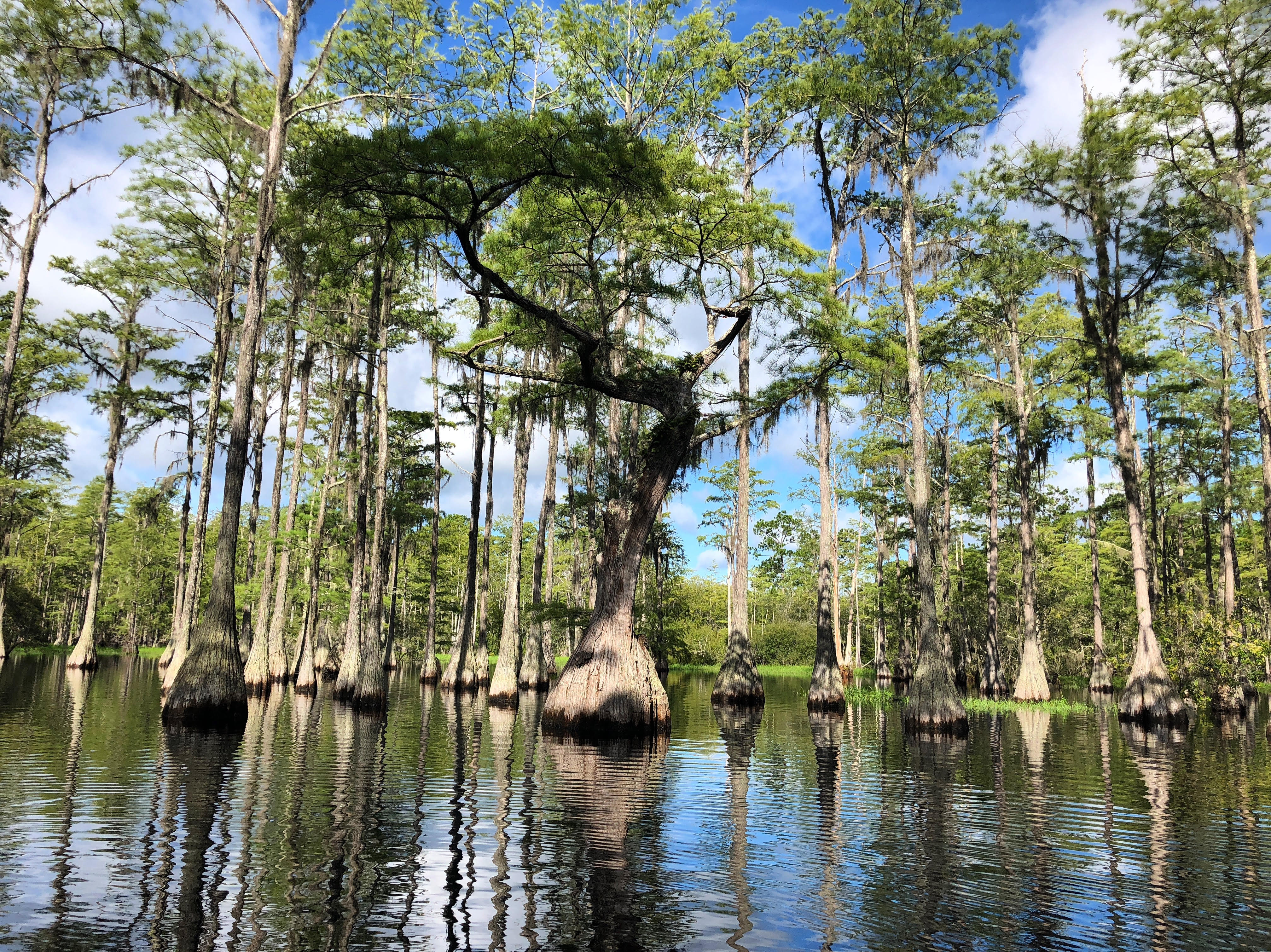Landscape has always been a foundational lens through which I interpret the world around me. I was born in Kentucky and raised in Florida. My maternal family’s farm lies in the rural flatlands of western Tennessee, and my dad’s family is from the tobacco country of the Carolinas. As a product of the American South, and growing up with its unforgiving humidity, dense swamplands and bayous, omnipresent reptiles, dripping moss, and strangling kudzu, I understood how landscape underscored my everyday experience. I learned how natural materials hold a tangible history of lineage, labor, and land that communities pass down to succeeding generations through shared stories and mythologies. Today, my work folds the unique histories of place into an experience that considers how land and its accompanying lore contribute to contemporary social, political, and psychic constructions of space, particularly in the landscapes that are significant to my family. I am also interested in the role of landscape in the creation of Americana and in how the natural environment is the central protagonist, not a backdrop, of everyday life.
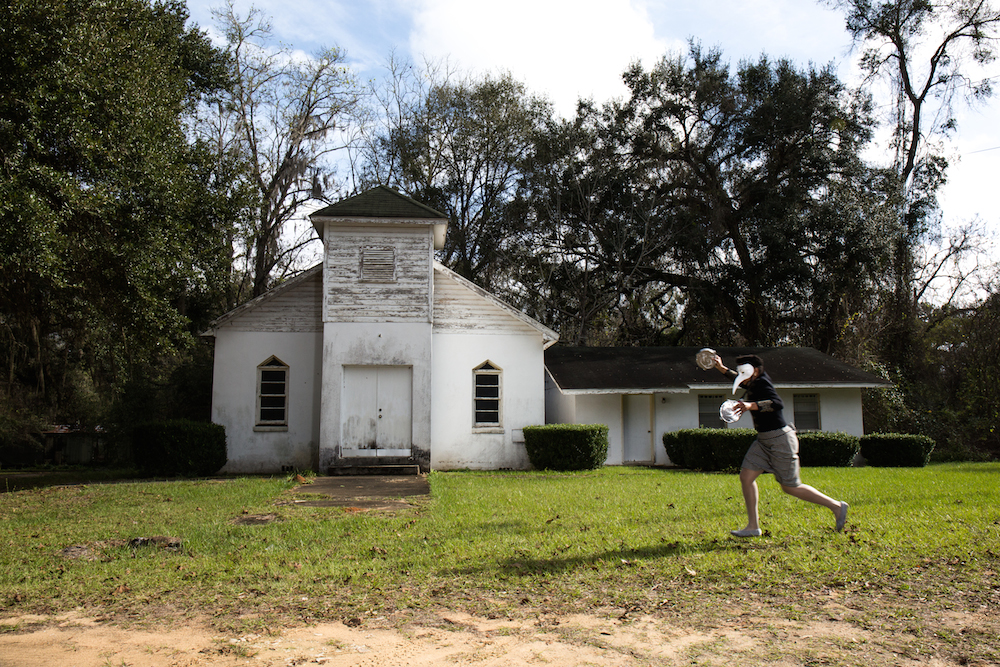
Allison Janae Hamilton. When the wind has teeth, 2018. Archival digital print. © Allison Janae Hamilton. Courtesy of the artist and MASS MoCA.
“Everyday confluences of life, labor, and land were the basis of my experience of the world.”
In Tennessee, the family farm was centered on cotton and soybean crops. My great-grandparents, my grandmother and her nine siblings, and my mother and countless cousins called this land their home. My aunts made muscadine wine and fermented persimmons into beer. They raised guinea hens, hogs, catfish, and hunting hounds. My great-grandmother, for whom I was named, was a known markswoman; she passed on her skill of how to handle a rifle, by teaching her daughters. When I was a child, my mother and I would make the trek from Florida to Tennessee a few times each year, to help with the planting and harvest seasons. We’d snap beans in the spring and silk corn in the summer. Around Thanksgiving, cotton lined the sides of every road in town like snow, as it fell off the trucks heading for processing. In Florida, we’d prepare for hurricanes during the rainy season, tend to backyard citrus, and were endlessly watchful of alligators in neighborhood canals. These everyday confluences of life, labor, and land were the basis of my experience of the world. But the fraught history and present realities of the landscape were always intertwined with its seductions. In my work, I mine this simultaneous haunting and beauty as a material embedded in the natural elements of the land, whether in the turpentine industry in northern Florida or in the ability of natural disasters like floods and hurricanes to shed light on existing social disasters.
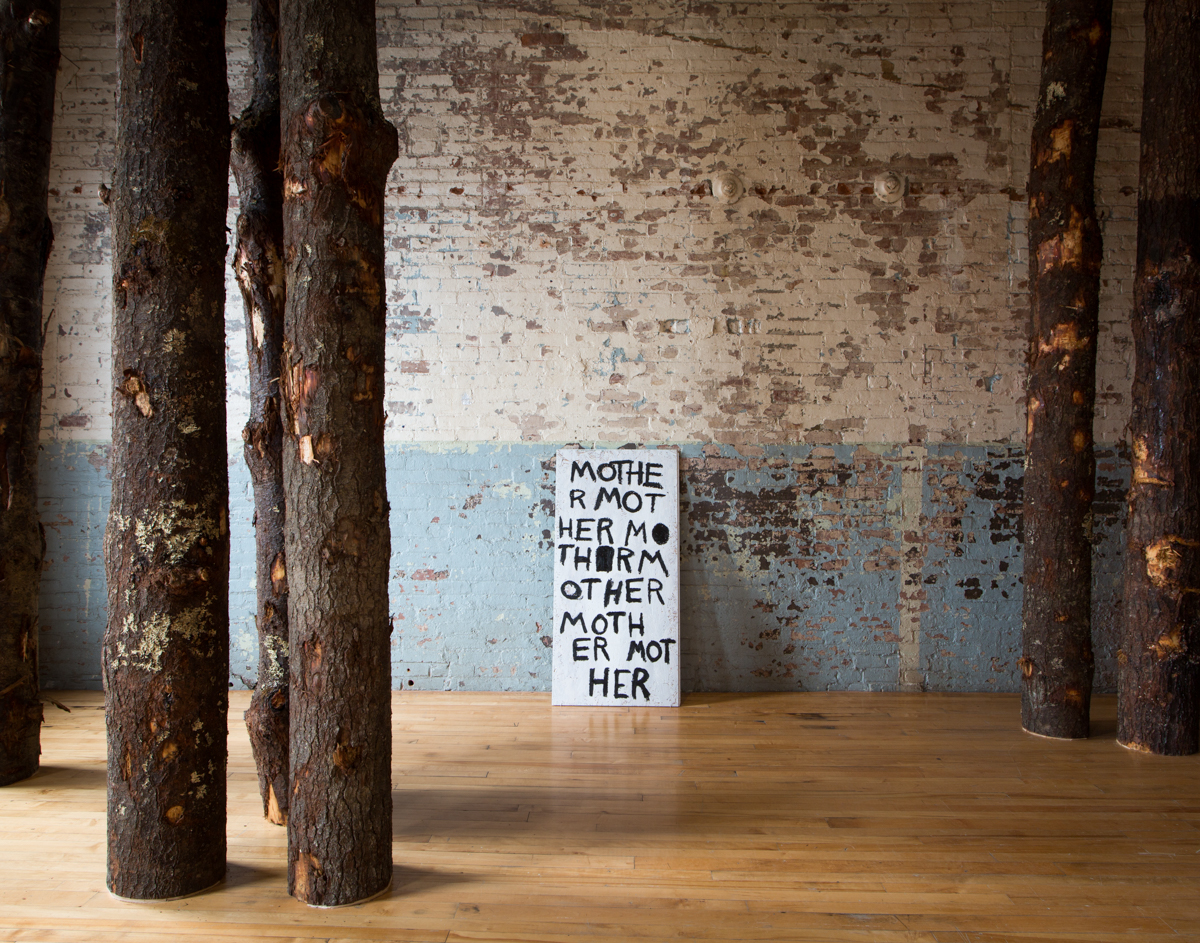
Allison Janae Hamilton. Pitch, 2018. Archival digital print. © Allison Janae Hamilton. Photo: David Dashiell. Courtesy of the artist and MASS MoCA.
“Southerners are haunted by their own landscape.”
—Walker Evens.
The photographer Walker Evans said, “Southerners are haunted by their own landscape.” The unsettling figures in my work are accordant with this idea, as they convey the concerns of today’s changing Southern terrain, such as community-land loss, environmental injustice, climate change, and sustainability. Each work contains narratives that are pieced together from folktales, hunting and farming rituals, African-American nature writing, and hymns both religious and secular. The ecosystems contained in my work exist between the tangible and the fantastic, bringing the captivating and the disquieting together in ways that speak of rituals, histories, and myths embedded within the Southern land. I folded these multiple experiences into Pitch, my recent exhibition at the Massachusetts Museum of Contemporary Art. The exhibition’s central installation—a grove of pine trees that weaved through the gallery—focused on the arduous legacy of turpentining in northern Florida, tapping the trees for sap, which was once the state’s second-largest industry after citrus. The exhibition’s title suggests the resin of pine trees mined in the turpentine-making process, the myths and fables that take place in the dark hours of the night, and an array of noises heard in the pinewoods and swamps of northern Florida, from the sounds of animals to those associated with labor and song.

Allison Janae Hamilton. The peo-ple cried mer-cy in the storm, 2018. Installation view of Indicators: Artists on Climate Change. Painted tambourines and steel armature, 18 ft. x 36 in. x 36 in. © Allison Janae Hamilton. Photo: Jerry L. Thompson. Courtesy of Courtesy of the artist and Storm King Art Center.
The connections between labor, the environment, ritual, and tragedy are themes I explored in the creation of my monumental outdoor sculpture, The peo-ple cried mer-cy in the storm, mounted in 2018 at Storm King Art Center as part of the exhibition, Indicators: Artists on Climate Change. The eighteen-foot-tall sculpture comprised three stacks of white-painted tambourines, a nod to the chorus of the 1928 hymn, “Florida Storm,” written by Judge Jackson about the Great Miami Hurricane of 1926. That same year, another storm—the infamous Okeechobee Hurricane—would ravage the state, serving as the backdrop for Zora Neale Hurston’s novel, Their Eyes Were Watching God. Both storms devastated Florida; the latter killed thousands of Black migrant workers, who were buried in unmarked mass graves. Through my Storm King sculpture, I contemplated how climate-related disasters expose existing social inequities and how affected communities contend with the two-fold devastation. Activating the installation at the sculpture park was a performance, involving musicians who presented a soundscape inspired by the original “Florida Storm” hymn.

Allison Janae Hamilton. Installation view of Pitch, 2018. © Allison Janae Hamilton. Photo: David Dashiell. Courtesy of the artist and MASS MoCA.
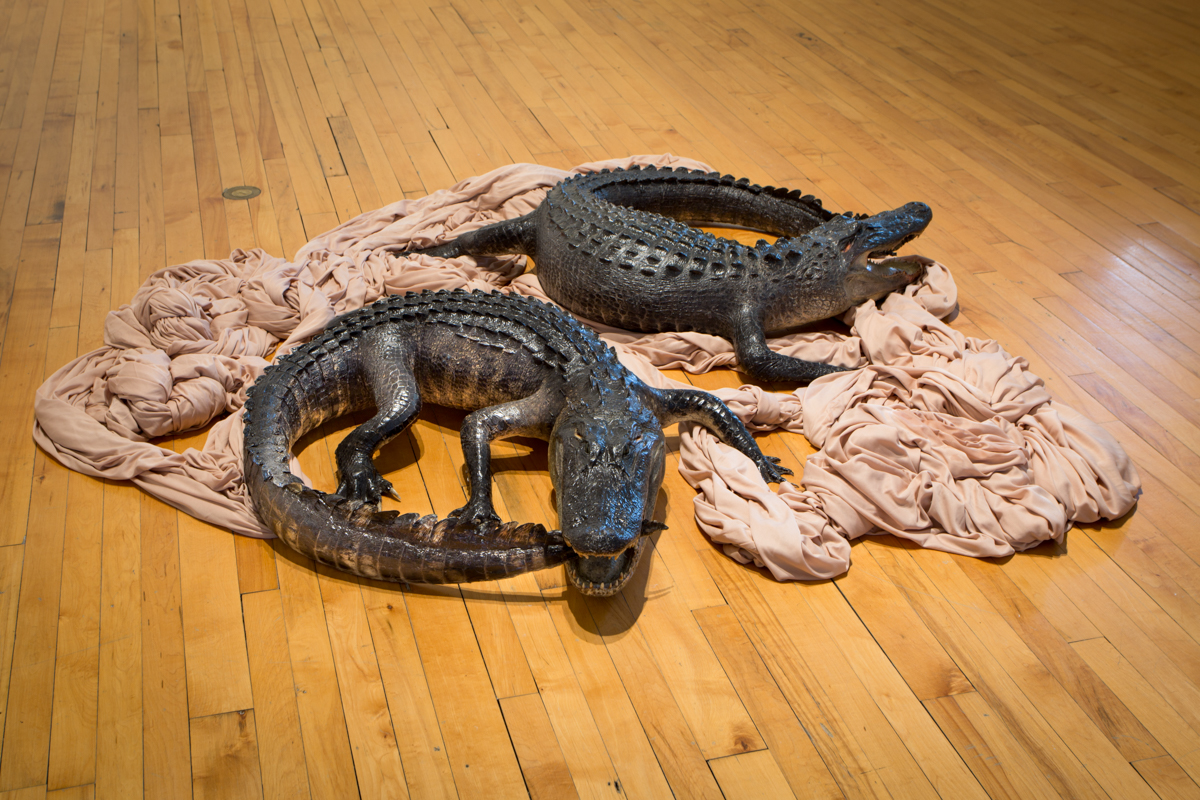
Allison Janae Hamilton. Installation view of Pitch, 2018. © Allison Janae Hamilton. Photo: David Dashiell. Courtesy of the artist and MASS MoCA.
“Too often, narratives of land, particularly of the American South, are considered solely for their pasts.”
My most recent project, opening at MoMA PS1 in June 2019 as the culminating exhibition of my artist residency at the Studio Museum in Harlem, follows my recent explorations of land and experiments with water as a conduit. Through this lens, I’ll explore the perception of the coastal landscape as Edenic in contrast to the realities affecting those who dwell there, such as issues of labor, forced migration, exploitation, and toxic pollution. With an eye toward the coastal American South and my home state of Florida in particular, these works explore narratives that portray aquatic landscapes as paradisal and that both relate and contrast to the contemporary rituals of life along the water’s edge. The centerpiece of the installation, Wacissa, is a single-channel video of an abstract underwater river scene, with accompanying photographs that depict an ethereal figure floating underwater and young girls traversing through a sable-palm forest; corpse-like creatures positioned on the exhibition floor and suspended in space. The room is treated as a mythical terrain—in some ways, an idealized aquatic paradise; in others, an archaeological site filled with harsh remnants of life. The work’s morphologies delineate a territory that may have arisen in the aftermath of a natural or human-made catastrophe. Part water landscape, part wasteland, this territory emerges after the overuse and destruction of its resources, yet it eerily remains a pleasurable scene. Utilizing artifacts—natural elements and reclaimed resources—affords me an opportunity to present findings that exist on old terrain, an eroded and uncertain territory laden with the suspense of the imagined landscape.
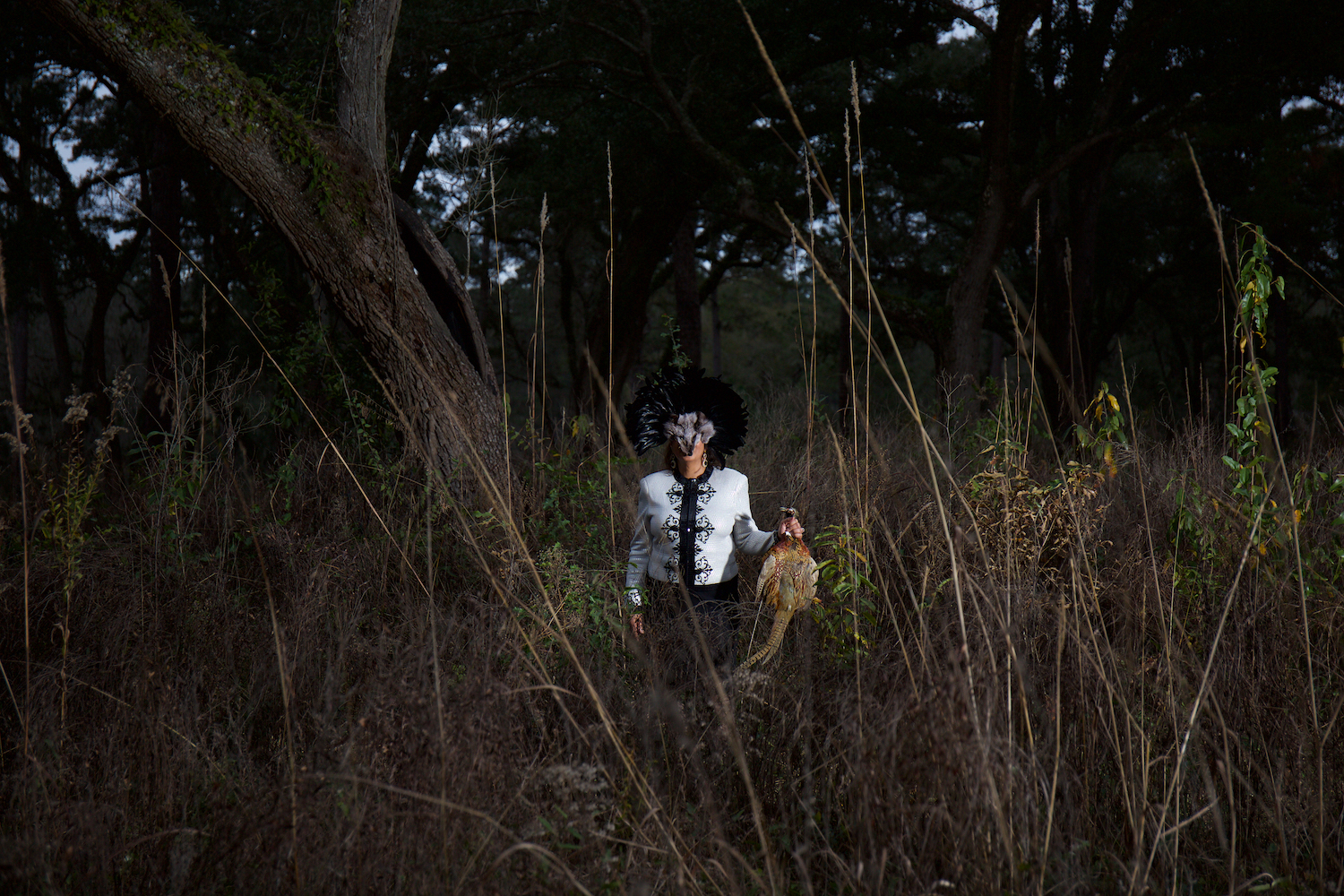
Allison Janae Hamilton. Brecencia and Pheasant II, 2018. Archival digital print. © Allison Janae Hamilton. Courtesy of the artist.
Inspired by history, family, and folklore, I intend to reflect the current questions of landscape, because too often, narratives of land, particularly of the American South, are considered solely for their pasts, as if the most significant elements of life have already happened and are frozen in time. My work is an attempt to explore the land as it exists along with the living, now and toward the future.

